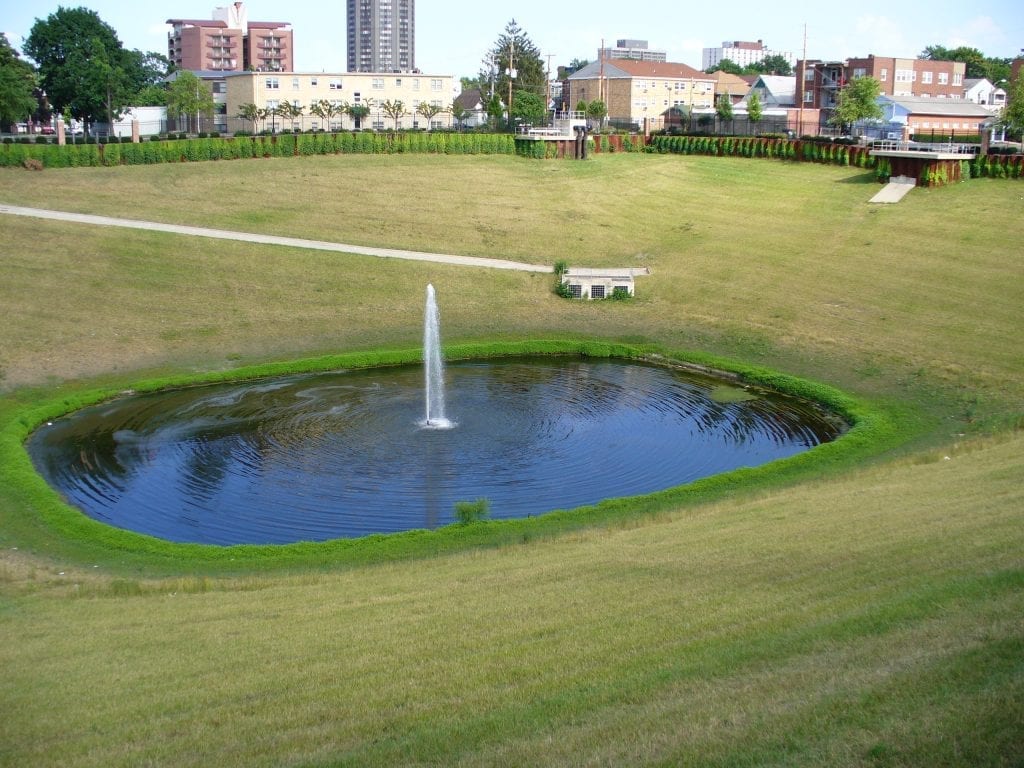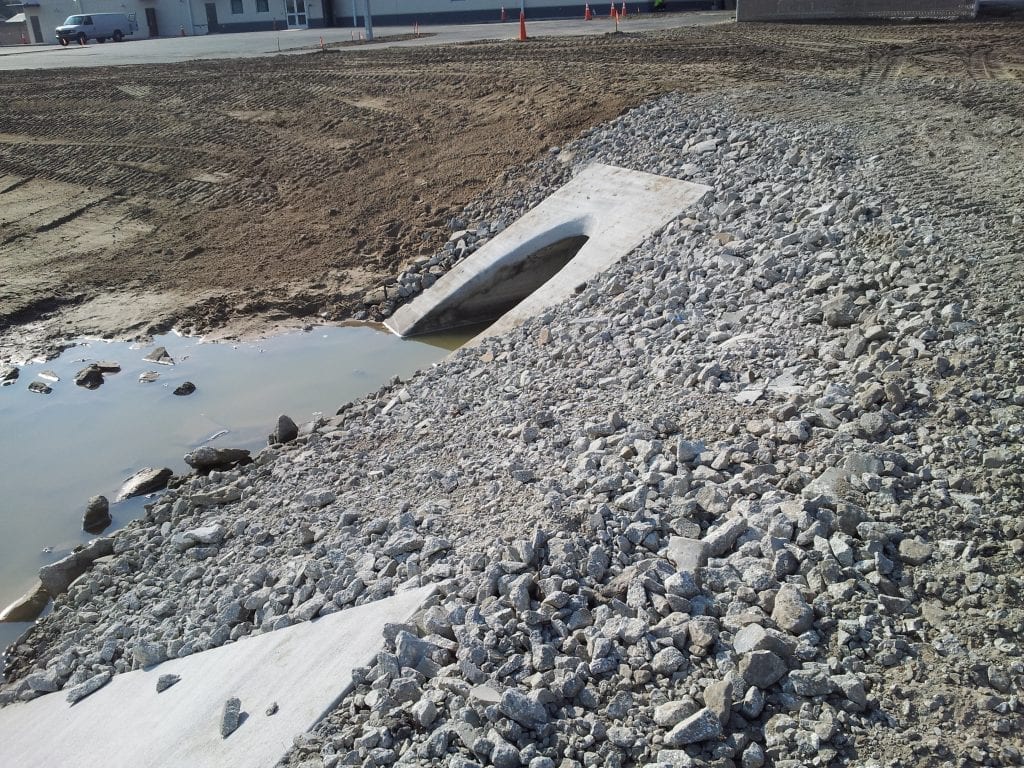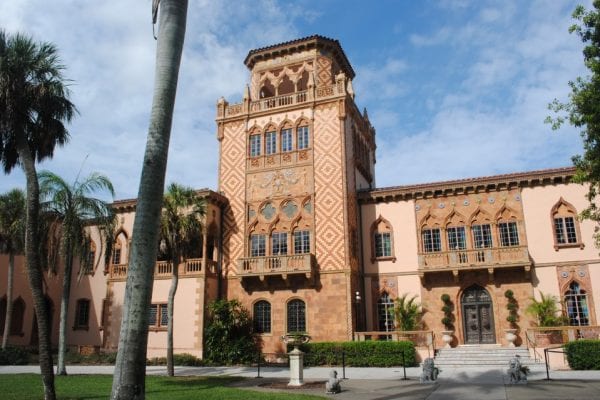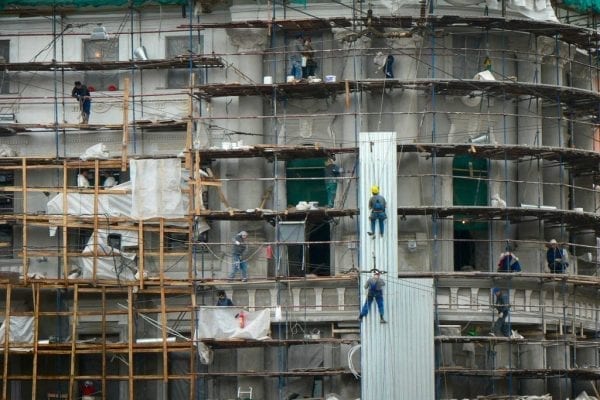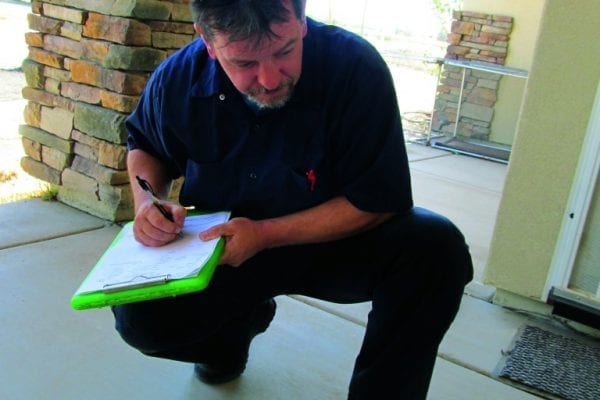Nationwide, there are thousands of stormwater management systems, many of which are owned by commercial property owners. In fact, nearly every commercially developed property has some form of stormwater management system. In many cases, the system is so low maintenance that the property owner only thinks about it every few years, when the district-mandated inspection comes due. It’s easy to forget that it even exists.
However, ignoring its existence can lead to major problems. In every municipality of the United States, maintenance of stormwater management systems is required as a condition of continued use of the land, and the owner is legally bound to that maintenance. Further, skipped maintenance can cause deterioration of the system that will be much more costly to repair later, rather than to prevent it up front.
Here’s what property owners need to know to ensure their stormwater maintenance system continues to operate as designed and remains a low-maintenance, low-cost feature of their property. In this article we’ll discuss:
- The two most common types of stormwater systems and the essential differences between them
- The basics of routine maintenance for each
- How to monitor for potential problems with your system
Types of Stormwater Systems
When a property is first developed for commercial or private use, the developer is required to include a stormwater management system to prevent adverse impact on adjoining properties and the environment. Generally, the system is designed to address water quality by treating the on-site runoff, and to ensure that the quantity of the water leaving the property during storm events remains the same as it was prior to development – thus, no adverse impact.
Depending on the location, topography, and other factors, a number of different stormwater systems may be designed for a given property. In most cases, however, the system consists of one of two types: Wet ponds, or dry ponds. This is greatly determined by the depth of seasonal high water. If it is close to the surface it is more beneficial to design the pond as a “wet” pond system. Conversely, if it is at greater depth, a “dry” pond system is more beneficial.
Wet Pond System
A wet pond system is exactly what it sounds like. It is an area of the property that is designed to maintain water in a pond-like environment. A wet pond treats runoff from the development by utilizing sunlight and vegetation, which breaks down, filters, and cleanses pollutants. A wet pond is generally easier to maintain than a dry pond, because vegetation can be allowed, and encouraged, to grow, and will usually require less frequent inspections.
Dry Pond System
A dry pond system is also exactly what it sounds like. Instead of being designed to maintain water, a dry pond system is designed to treat pollutants within the runoff as it filters through the soil and substrate. Unlike a wet pond, a dry pond must be kept free of excess vegetation, so that the soil can do its job of filtering. A dry pond will usually require more frequent inspections, and a more stringent maintenance program.
In both cases—wet ponds and dry ponds—the system will include a series of gutters, pipes, and drains throughout the property, designed to carry stormwater directly to the pond system for processing.
Routine Maintenance
Regardless of the type of system you own, some portions of routine maintenance are the same. These include preventing erosion and keeping drains clear. Ponds additionally may require maintenance of fences, and dry ponds will require vigilance against vegetative overgrowth.
Erosion Prevention
Erosion becomes a problem when pond embankments and other elements of the system begin to deteriorate. If identified early, erosion can be remediated easily with gravel, plantings, and other simple solutions. If left to deteriorate, erosion can eventually lead to flooding, system failure, and expensive repairs—not to mention the liability should a neighboring property owner choose to pursue financial or legal remedy for damages. To get to the problem early, you can either inspect the property regularly yourself to look for signs of erosion, hire a systems professional to do it, or simply ask your grounds maintenance team to keep their eyes open and let you know when they see any cause for concern.
Drain System Maintenance
Over time, drains can become clogged with leaves and other debris. This can lead to flooding, either within the property, or onto a neighboring property. Either one is a big problem if allowed to continue. It’s a simple matter to keep drains clear in the same way you prevent erosion—inspect the property yourself, hire a professional, or instruct your grounds maintenance team to make it part of their job to routinely check for any blockage.
Fence Maintenance
Some ponds can be made a feature of the property and enjoyed by its tenants and visitors. Others may have to be enclosed by a fence, and the difference usually lies in how steep the embankments are. Steep slopes can increase risk of drowning, and hence require a fence. If your pond is currently surrounded by a fence, it’s likely that the fence was mandated at the time that it was permitted, and therefore it’s your job to ensure that fence remains intact. A damaged or absent fence can lead to major liability issues should someone access the pond and get hurt. Again, have your grounds maintenance team keep their eye on the fence and let you know of any breach.
Vegetation
In a wet pond, vegetation is a good thing—it helps with cleansing of the water. In a dry pond, however, excess vegetation can be a costly impact to the system. Dry ponds are designed to allow water to filter into the soil and dissipate into the groundwater. The roots of trees and shrubs displace the soil, reducing its ability to filter and pass the water through. In some cases, heavy overgrowth can damage the system and lead to expensive repairs. The simple solution is to keep the dry pond mowed regularly. Make sure your grounds maintenance team knows where the pond is, and keeps it well trimmed.
Monitoring for Problems
Generally, maintaining and monitoring the stormwater system is as simple as designating a team—whether your grounds maintenance team, yourself, or a professional hired for the job—and instituting a routine operation and maintenance plan. Make sure the responsible parties check for the four big potential problem areas—erosion, storm drain system, fences, and vegetation—on a regular schedule, and report any findings so that you can address any issue quickly. If you’re not sure where to start, or wonder if you already have a problem, contact a stormwater professional to point you in the right direction. Feel free to reach out to our team of experts today to get your questions answered.

